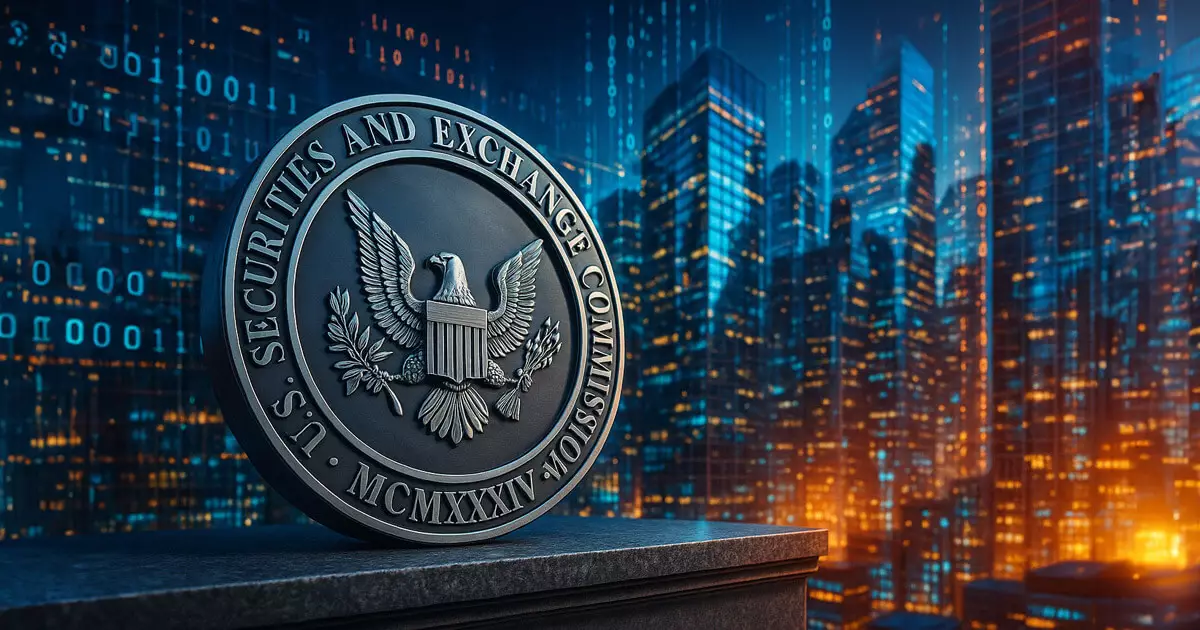In a groundbreaking move last week, the SEC’s Crypto Task Force significantly ramped up its exploration of how public blockchain technology can revolutionize the issuance and trade of tokenized securities. This initiative is essential as it represents not just an evolution in financial markets, but a potential paradigm shift that can redefine how we perceive ownership in the digital age. However, the regulatory environment remains a sore point for many. A prolonged acceptance of traditional frameworks could thwart innovation and solidify existing monopolies, which is counterproductive to a thriving economic ecosystem.
The meetings involving key players like Nasdaq and Plume Network echo a sentiment that we’ve heard before—the necessity of a regulatory sandbox. This concept isn’t merely bureaucratic jargon; it is an urgent appeal for a structure that can accommodate innovation without forsaking the fundamental principles of investor protection. By allowing firms to self-certify classifications under lenient disclosure standards, we can encourage experimentation in a field ripe for invention.
Nasdaq’s Call for Balance
The proposals from Nasdaq, including an “ATS-Digital” venue for listing digital asset investments, make sense in our increasingly digital world. It’s not just about putting on blinders and hoping for the best; Nasdaq’s executives have urged that tokenized securities remain under existing registration laws. This call for regulatory caution resonates strongly given the precariousness associated with digital assets. Compliance within established frameworks preserves the integrity of the financial system while still fostering innovation.
However, there exists a tension here. While Nasdaq rightly insists that regulations must remain intact to safeguard the market system, it also rightly acknowledges that a balance is critical in advancing liquidity and reducing operational risk. This duality must drive ongoing discussions in regulatory settings.
Permissionless Possibilities
Plume Network’s advocacy for permissionless blockchains to serve as facilitators for asset tokenization lays out an exciting pathway. The essence of blockchain technology lies in its decentralized nature. These characteristics can expedite processes that legacy systems have long bogged down with inefficiencies. The notion that the SEC could consider a regulatory sandbox covering the 1933 Securities and 1934 Exchange Acts, with strategic ‘safe harbor’ provisions, encapsulates a strong legislative move toward modernization.
However, we must be cautious. “Credible neutrality” is a catchphrase that glosses over the complex, often messy details of who manages these decentralized systems and how they can be held accountable. Regulatory frameworks must evolve to appropriately address these challenges without stifling the technological advancements that have already shown promise in enhancing market function.
A Wave of Innovation
Etherealize’s approach to addressing inefficiencies in legacy transfer agent regulations highlights an acute awareness of the friction caused by outdated procedures. The core proposal that we could recognize secure blockchains as authoritative share registers represents an audacious leap forward. The suggestion for the SEC to exempt issuers using decentralized tokenization protocols from existing registration requirements should not be taken lightly—it suggests a new vision for the intersection of technology and finance.
The call for pilot programs to test smart contracts for corporate actions is particularly tantalizing. Such initiatives can provide invaluable insights into how tokenized systems can operate effectively in a real-world context and refine the regulatory approach over time.
A Unified Voice for Innovation
Across all these discussions, whether with Nasdaq, Plume Network, or Etherealize, there appears to be a consensus on the need for clear taxonomy and modular rulebooks, which is a vital clarion call for coherent communication between innovators and regulators. This is not about circumventing the core investor protections; rather, it’s about evolving them to fit a digital-first economy.
The SEC’s acknowledgment of the suggestions and ongoing deliberations on potential sandbox models indicates that we are on the brink of significant regulatory advancements. This presents an opportunity seldom seen in regulatory history: the chance to shape policies that not only keep pace with innovation but actively promote it.
The potential for a regulatory sandbox is not just another compliance mechanism; it’s a necessary platform for ensuring the U.S. remains a leader in financial technology. As we stand at the precipice of this shift, it is essential that the SEC embraces this opportunity to bridge the gap between the technological and regulatory arenas, paving the way for a future in which tokenized securities can thrive.
















Leave a Reply